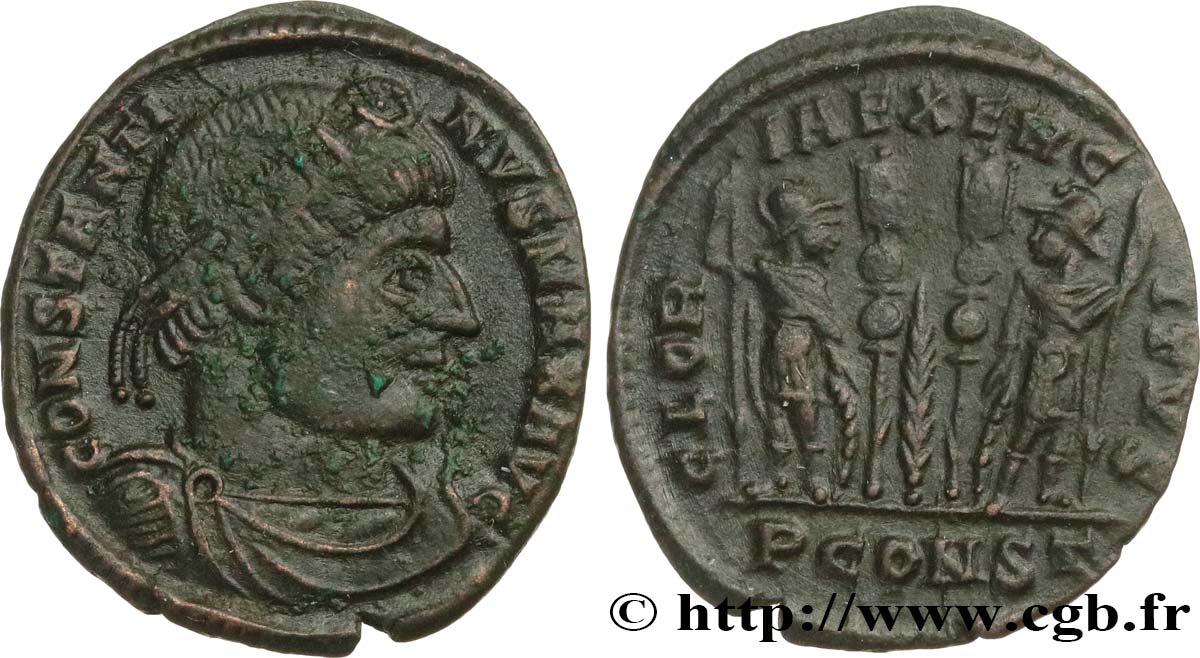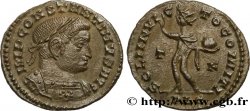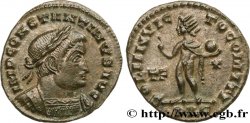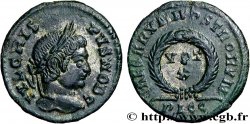brm_606341 - COSTANTINO I IL GRANDE Centenionalis ou nummus
non disponibile.
Articolo venduto sul nostro negozio (2021)
Prezzo : 30.00 €
Articolo venduto sul nostro negozio (2021)
Prezzo : 30.00 €
Tipo : Centenionalis ou nummus
Data: 331-332
Nome della officina / città: Arles
Metallo : rame
Diametro : 19 mm
Asse di coniazione : 12 h.
Peso : 1,79 g.
Grado di rarità : R1
Officine: 1re
Commenti sullo stato di conservazione:
Flan ovale, centré. Joli revers. Usure régulière. Patine foncée
Diritto
Titolatura diritto : CONSTANTI-NVS MAX AVG.
Descrittivo diritto : Buste diadémé, drapé et cuirassé de Constantin Ier à droite, vu de trois quarts en avant (A’b) ; diadème lauré et gemmé (cloisonné).
Traduzione diritto : “Constantinus Maximus Augustus”, (Constantin le grand auguste).
Rovescio
Titolatura rovescio : GLOR-IA EXERC-ITVS/ (PALME)// PCONST.
Descrittivo rovescio : Deux soldats debout face à face, vêtus militairement, tenant chacun une haste renversée et un bouclier au milieu, deux étendards.
Traduzione rovescio : “Gloria Exercitus”, (La gloire de l’armée).
Commento
Poids léger. Arles (Arelatum) change de nom et prend celui de Constantia en l’honneur de Constantin II, né dans la ville. Pour ce type, il existe deux variétés pour le revers la palme reposant sur le sol (AMA 517-519) ou entre les deux enseignes en haut (AMA 519-520). Pour cette variété, P. Ferrando a recensé 13 exemplaires dont six en musées.
Lightweight. Arles (Arelatum) changed its name to Constantia in honor of Constantine II, who was born in the city. For this type, there are two varieties for the reverse, the palm resting on the ground (AMA 517-519) or between the two ensigns at the top (AMA 519-520). For this variety, P. Ferrando has recorded 13 examples, six of which are in museums.
Lightweight. Arles (Arelatum) changed its name to Constantia in honor of Constantine II, who was born in the city. For this type, there are two varieties for the reverse, the palm resting on the ground (AMA 517-519) or between the two ensigns at the top (AMA 519-520). For this variety, P. Ferrando has recorded 13 examples, six of which are in museums.








 Segnalare un errore
Segnalare un errore Stampate la pagina
Stampate la pagina Condividi mia selezione
Condividi mia selezione Fai una domanda
Fai una domanda Consegnare / vendere
Consegnare / vendere
 Descrittivo
Descrittivo















